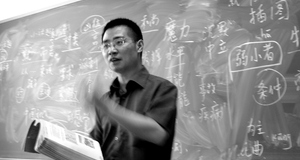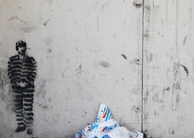"Responsiveness" in American Higher Education: The Evolution of Institutional Governance Structures
By
2016, Vol. 8 No. 02 | pg. 1/2 | »
IN THIS ARTICLE
Building a framework to understand a complex system, such as American Higher Education, requires a focused approach. The richness of history behind colleges and universities in the United States can lead analysts in any number of directions. From economics to governance, to curriculum and accreditation, approaches to analyzing the system have grown exponentially as more stakeholders have been brought into the conversation. As the demand for higher education has become an international imperative, perhaps it is more fitting to analyze what makes the American system unique. In his work, the “International Comparative Study of Higher Education: Lessons from the Contemplation of How Others Might See Us” (2003), Bruce Johnstone identifies eight characteristics that truly distinguish the American model of Higher Education from its international counterparts. While significant study could be focused on any of the characteristics he presents, the idea of a high level of “responsiveness” to national, state and local constituencies requires further examination. Johnstone (2003) speaks to this characteristic pragmatically by noting that a lack of responsiveness would make the system seem ignorant to the needs of the government, industry and students invested in the ultimate success of colleges and universities. Additionally, if the “system” of higher education is not reflective in its own practice, it will fail to be responsive as well. Shifts during the history of American higher education included changes in the governance and oversight of higher education, the role of the college, and who held the right to attend. American higher education system responsiveness is marked by an evolution of institution governance structure, protection of academic freedom, and accountability. Curricular Responsiveness fortifies broader changes across the system with a focus on changing student needs and populations. Before proceeding with a focused history of responsiveness in American higher education in each of these two contexts, the basic tenets of responsiveness in general should be defined more specifically.Systemic and curricular responsiveness respect a “social contract,” committed to the needs of diverse stakeholders inside and outside the institution of higher education. Definition of ResponsivenessThe idea of responsiveness can be defined in a number of ways depending on context. Silver (2007) notes that the ancestry and historical development of colleges and universities has a hand in determining its definition in regard to higher education. Additionally, the stakeholders in higher education (i.e. students, faculty, administration, government, industry) contribute to this definition out of their dependence on the success of such institutions. Two basic tenets of note are the idea that colleges and universities ought to become “functionary organs” of society (Silver, 2007), and build a “social contract” (Benneworth and Jongbloed, 2009) between stakeholders inside and outside the walls of institutions. More specifically, that “social contract” also obligates the system of higher education to be responsive to itself in terms of governance, oversight, and quality control. Additionally, the idea of the “social contract” invests in the flexibility of the system for curricular changes. This contract speaks to the necessary commitment on the part of colleges and universities to have curriculum meet the needs of the stakeholders identified above. Consequently, the strength of the “social contract” increases as the boundaries of an institution become more permeable (Benneworth and Jongbloed, 2009). The absence of such a relationship would make defining responsiveness and describing its history in the American context irrelevant. Therefore, the decision to respond to outside pressures systematically or curricularly is what distinguishes the American model from its European predecessors (Kerr, 2001), underscoring Johstone’s claim more finitely. The (2) ideas mentioned above do not only define responsiveness, but provide a framework for examining its history in more detail. System responsiveness and curricular responsiveness each hold their own definition(s), which provide depth the historical and contemporary examples cited below. System Responsiveness DefinedThe “system” of Higher Education in the United States has gone through many permutations in order to become responsive. A system, in the case of higher education, is defined as the framework of human resources that are structured to process inputs and relay outputs (Chang & Tam, 1997). This definition is not relegated to colleges and universities, but to the entire institution of higher education as a whole. Arrangement and function of this system is critical to responding to the demands of stakeholders internally. System Responsiveness therefore is defined as the ability of colleges and universities to be internally focused, responding the direction and needs of a constantly changing enterprise (Kerr, 2001). However, system responsiveness is not inextricably linked to an internal focus. The system itself (institution, state, national) may develop human or technical resources internally, which respond to external forces. An example of such as response would be adjustments made to the curriculum both in content and practice. Curricular responsiveness therefore requires its own context and will be addressed in a later section. For the purpose of this essay, “system responsiveness” alludes to how specific areas within higher education have been shaped by internal trends. The “system” has adapted, or responded to internal demands in (3) specific areas: The Role of the President, Protection of Academic Freedom, and Standards of Equality/Efficiency. The Role of the President in “System Responsiveness”The college or university president in its current conception owes a debt to innovators who affected their own unique vision of what it meant to be an agent of change, which in turn meant becoming more aware of internal and external demands. Movement and progress can only so far as the leader of the educational enterprise allows, and furthermore this change can only be inspired among his/her most key stakeholders when supplemented with vision and foresight. Mending fences across faculty divisions, allocating human and financial resources, and isolating the most crucial outputs worthy of focus are just a few of the modern college or university president’s responsibilities (Lucas, 2006). Broad leadership inspires positive movement that connects responsiveness with overall equity and quality. History dictates that these keystones of the presidency did not take shape by chance, but by a focused effort of a few that took action in terms of shifting the culture of higher education. Harvard and Cornell were both fertile ground for Charles W. Eliot and Andrew D. White, respective presidents of each institution in the mid-19th century to leverage their power for the purposes of curricular change. That executive control resulted revolutionary ideas such as the free elective system (Veysey, 1965) and the ever changing role of how governance models drove curricular innovation. Creating a shared vision, albeit idealistic vision, of what an institution vested in research should look like drove William Rainey Harper at the University of Chicago in the same vain as his contemporaries in the eastern part of the country. A university seen as a collective “system” grew as a result, and he dedicated resources to respond to the changing demands of an ever changing country outside the walls of the institution. Pronounced shifts in the role of the president in effect shifted the degree to which internal and external forces demanded responsiveness on the part of their curricular enterprise. The “system” has responded in contemporary higher education to re-brand the college/university president. A president is a “shared” entity among the governing board, the faculty, students and administration. Particularly, note should be taken of the use of quotation marks in this case. Administrators, faculty members, and students would have a lot to say about the definition of a college president being “shared.” Kerr (2001) defined the role of the president in a more bi-partisan way. He encouraged the contemporary conception of the college or university president be that of a mediator. This conceptualization of the president is a contemporary take, but illustrates an internal “system” response that changed the role of the college/universities lead executive. He/she mediates between: a) internal stakeholders (i.e. students, faculty, trustees) and within those bodies themselves b) interest groups/change agents and the institution c) preservation and innovation (Kerr, 2001). The college or university president is no longer an active spearhead of change, and he/she was more than a century ago (Kaufmann, 1968). As the higher education system has expanded to new markets, and more departments have been incorporated into the university structure specifically, the “system” response has been to encourage presidents to acquiesce from autocracy, to a more bureaucratic style moving forward. Academic Freedom and “System Responsiveness”Academic Freedom and the formation of the American Association of University Professors (AAUP) in 1915, is yet another example of internal “system responsiveness.” Scientific, political and economic views became increasingly diverse in the late 19th and early 20th centuries. Consequently, the idea that the professorate within academia should be protected gained significant momentum. The formation of the AAUP represents “system responsiveness,” in the sense that it totally involved the participation of professors, researchers, administrators and college/university presidents. Therefore, the system itself came to define academic freedom, by being responsive to constituencies within higher education itself. Metzger (1955) identified the professional societies within higher education (American Economic Association, American Sociological Association, American Political Science Association) that comprised the first committee focused on defining academic freedom. Moving forward, it was decided that in order to respond systemically, a future association such as the AAUP would need to identify specific cases that were breeches of academic freedom, as well as codify specific rules that would guide colleges and universities in the future. The 1940 AAUP Statement signifies the culmination of these efforts to respond to internal pressures to define academic freedom. A systemic response was issued to outline specific issues related to the academic profession, including: for profit research/publication, content, appointment details, public expression of personal opinion, tenure appointment/review, probationary periods, and termination. Because the AAUP would involve universities across the United States by reviewing cases and defining rules, its formation provides a clear example of “system responsiveness.” Equality/Efficiency and “System Responsiveness”Increases in the college going population across social, racial, and economic barriers have forced the contemporary system to elicit a response to increasing social pressures like never before (Johnstone, 2003). As opposed to the two examples cited above, the focus of state “systems” of higher education has an externally responsive component as well. However, these external demands for equality and efficiency lead to human and technical mechanisms being created. Accrediting agencies, admissions programs and quality indicators are an internal, systemic response to these types of demands. Orientating the focus of the “functional organ” toward quality of programming and resources, tracking individual groups of students over time became a necessary “system” response. Measuring the quality of instruction has become linked to what students can produce and their ability to reach their potential as efficiently (economically) as possible (Dey & Hurtado, 2005). Proper oversight of accrediting bodies such as Middle States Commission has been emphasized by The Council for Higher Education Accreditation. Moreover, the contemporary accreditation process is invested in peer review, self-study and site visits done by peers at a multitude of institutions (Eaton, 2006). Although the process is vested within external organizations, the demand for quality assurance is not totally external in nature. By creating standards to govern the enterprise, and responding internally, colleges and universities secure their professional programs’ (i.e. law, medicine, education, nursing, etc.) level of quality. The entire system of higher education has also responded to the notion of accreditation, by linking federal and state funding/licensure to the process. College access and admissions plans, such as the Texas Top 10 plan and Georgia Hope (Cullen, Long & Reback, 2012), have also analyzed an implicit need to increase efficiency, while responding to traditionally underserved populations via a systemic approach (Moses, 2001). Contemporary colleges and universities are attempting to quantify and improve the results moving forward, responding to the demand for accountability by the system as a whole (Cullen, 2011). New system orientated goals, such as increasing student engagement, openly respond to the needs of the surrounding community. These motives have now been coupled with system mandates, that faculty and administration measure the results of such programming on learning and course content, which are measurable outputs (Butin, 2007). A strong commitment to accountability is a contemporary systemic response that respects demands for higher education to function equitably and efficiently. Curricular Responsiveness DefinedFunctioning as a branch of the definition provided above, curricular responsiveness has its own unique elements that add depth the characteristic Johnstone identifies. Pedagogy and curriculum have been used to make more finite changes aimed at the largest population of stakeholders; students. In respect to the “social contract” or responsibility of colleges and universities to their students, Dennison (2010) contends that changes to curriculum define true responsiveness. To respect internal pressure, is to combine a student (customer) focus with a diverse curriculum aimed at as many groups as possible. At the same time, one must not forget that the “social contract” has a purview outside that of the students. That customer orientated approach took time as the history will note, as religious non-secular influences began to yield. External stakeholders (religious/industrial) have also had significant influence in this area of higher education. Curricular responsiveness has gained its own examination in this essay as a result of its responsiveness to internal and external forces. Consequently, innovation in methodology emphasizes a responsive curriculum that could require a new model of college of university (Dennison, 2010). With instruction and the distribution of knowledge as the cornerstone of higher education, curricular responsiveness could be defined as the degree to which curricular models inside of an institution reflect societal trends. In a historiography of American Higher education, Veysey (1965) provides insight into curricular responsiveness with respect to utilitarianism. Through this lens, by simply changing what is taught is not enough to completely respond. History dictates that a combination of what is taught, who it is taught to and how it is delivered all contribute to curricular responsiveness in the American model of higher education.Continued on Next Page » Suggested Reading from Inquiries Journal
Inquiries Journal provides undergraduate and graduate students around the world a platform for the wide dissemination of academic work over a range of core disciplines. Representing the work of students from hundreds of institutions around the globe, Inquiries Journal's large database of academic articles is completely free. Learn more | Blog | Submit Latest in Education |


















